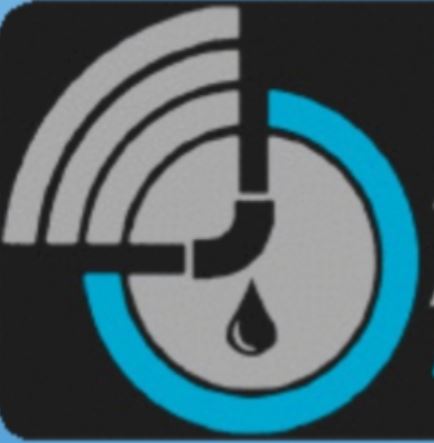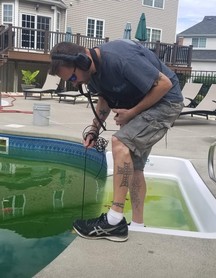-
Related Posts
- How to Chlorinate a Pool
Chlorine is a chemical used to disinfect and sanitize a…
- How to Green Your Pool
Having a greener pool doesn't mean encouraging algae growth! Greening…
- How to Paint a Pool
Paint is one of the most common pool surfaces. It…
- Home
- Pool Leak Repair
- Pool Pressure Testing
- Pool Leak Detection
- About Us
- Contact
Navigation- Home
- Pool Leak Repair
- » Main Drain Testing
- » Hotel Main Drains
- » Emergency Main Drain Repair
- » Additional Services
- » Vinyl Pool Liners
- » Pool Covers
- » Pool Repair Diver
- » The Leakalyzer - Leak or Evaporation Test
- » Pool Skimmer Problems
- » Termite Leak Repair
- » Pool Leak Detection
- » Underwater Services
- Pool Pressure Testing
- » Pipe Leak Detection - Underground
- » Skimmer Repair
- Pool Leak Detection
- About Us
- » Training and Support
- » » Leak Detection Training
- » » Leak Phone Support
- » FAQ
- » Testimonials
- » Checklist Before We Come
- » Service Areas
- » Privacy Policy
- » Leak Videos
- » » Leak Articles
- » » » Swimming Pool Leak Detection
- » » » Do leak companies fix leaks
- » » » Pool Leaks - home owners save money
- » » » Pool Water Evaporation
- » » » Pool Dye Testing
- » » » Narrow down a pool leak
- » » » Pool Structure Leaks
- » » » Pool Leak Indicator Level
- » » » Water Loss Speed
- » » » Pool Plumbing Leaks
- » » » Why Pools Leak
- » Terms & Conditions
- Contact
- » Email - Phone
Call Us 732-705-7344
NJ LICENSED & FULLY INSURED
How to narrow down a pool leak
How to Isolate a Pool Leak
Isolate The Pool Leak
Here is where this leak detection tutorial starts to get into more advanced leak detection tests. The bucket test and the dye test, along with a solid visual inspection are the first steps that most people will take to try to find a leak in your pool. When these quick and easy tests fail to locate the leak then you need to begin to break the pool down into sections in order to narrow down where the leak might be coming from. Not every part of your pool can be definitively tested for leaks - sometimes you will only know where the leak is because you have tested every other possible source for the water loss. Due to this it is very helpful for the leak detection process to begin to isolate the different parts of the pool in order to reduce the guesswork involved with finding the leak. If you can find the general location for the leak then you can focus your time and energy testing these specific locations.
When looking at a swimming pool as a whole, you can break it down into two main components which are:
1)The pool structure
2)The pool plumbing system
The structure of a swimming pool refers to the main body of the pool itself. This would include the interior surface of the pool as well as any fixtures installed into the pool. The plumbing system is everything that is located outside of the main body of the pool. Determining which of these main components is leaking will go a long way towards finding the leak in your pool.
Determining whether the pool is leaking through the structure or through the plumbing system can be done by plugging all ports in your pool with winterization plugs. By turning off the circulation system for the pool and plugging the skimmer and return ports you can isolate the body of the pool from the plumbing system. If you have a main drain in your pool then this complicates this test as you will either need to swim down and plug off the main drain line, or do the test without plugging the main drain. With all of the pool suction and return lines plugged simply let your pool sit for 24 hours and compare the rate of water loss to that of what you lose when the ports are not plugged. If the pool loses no water with the returns and skimmer lines plugged, but does lose water once you remove these plugs, then the leak is located somewhere in the plumbing lines for your pool. If the plumbing lines for the pool are leaking then you will need to skip ahead to the section on pressure testing the plumbing system. If the pool still loses water with the returns and skimmers plugged then this means that the leak is in the structure of the pool somewhere (or it is in the main drain if you were not able to plug yours as part of this test).
Monmouth County Service Areas
Aberdeen Asbury Park Atlantic Highlands Avon-by-the-Sea Belmar Bradley Beach Brielle Colts Neck Eatontown Fair Haven Freehold Borough Freehold Township Hazlet Highlands Holmdel Howell Keansburg Keyport Little Silver Long Branch Manalapan Manasquan Marlboro Matawan Middletown Millstone Monmouth Beach Neptune Neptune City Ocean Oceanport Red Bank Rumson Shrewsbury Spring Lake Spring Lake Heights Tinton Falls Union Beach Upper Freehold Wall West Long Branch
Middlesex County Service Areas
AT THE PRESENT TIME WE DO OFFER SERVICES TO:
Carteret Cranbury Dunellen East Brunswick Edison Helmetta Highland Park Jamesburg Metuchen Middlesex Milltown Monroe New Brunswick North Brunswick Old Bridge Perth Amboy Piscataway Plainsboro Sayreville South Amboy South Brunswick South Plainfield South River Spotswood Woodbridge
Ocean County Pool Service Areas
WE OFFER SERVICES TO THE FOLLOWING AREAS ONLY:
Bay Head, Brick, Lavallette, Mantoloking, Point Pleasant, Seaside Heights, Toms River
AT THE CURRENT TIME WE DO OFFER SERVICES TO:
Barnegat Beach Haven Beachwood Berkeley Eagleswood Harvey Cedars Island Heights Jackson Lacey Lakehurst Lakewood Little Egg Harbor Long Beach Manchester Mantoloking Ocean Gate Ocean Pine Beach Plumsted Ship Bottom South Surf City Stafford Toms River Tuckerton
Pool Leak Detection in
Monmouth, Ocean And Middlesex Counties NJ
NJ POOL PATCHER
NJ Pool Patcher, LLC
29 Roberts Drive
Neptune City, NJ 07753
732-705-7344
Sales@PoolPatcher.com
- Pool Leak Detection & Pool Leak Repair Services : NJ Pool Patcher A Pool Article How to narrow down a pool leak


